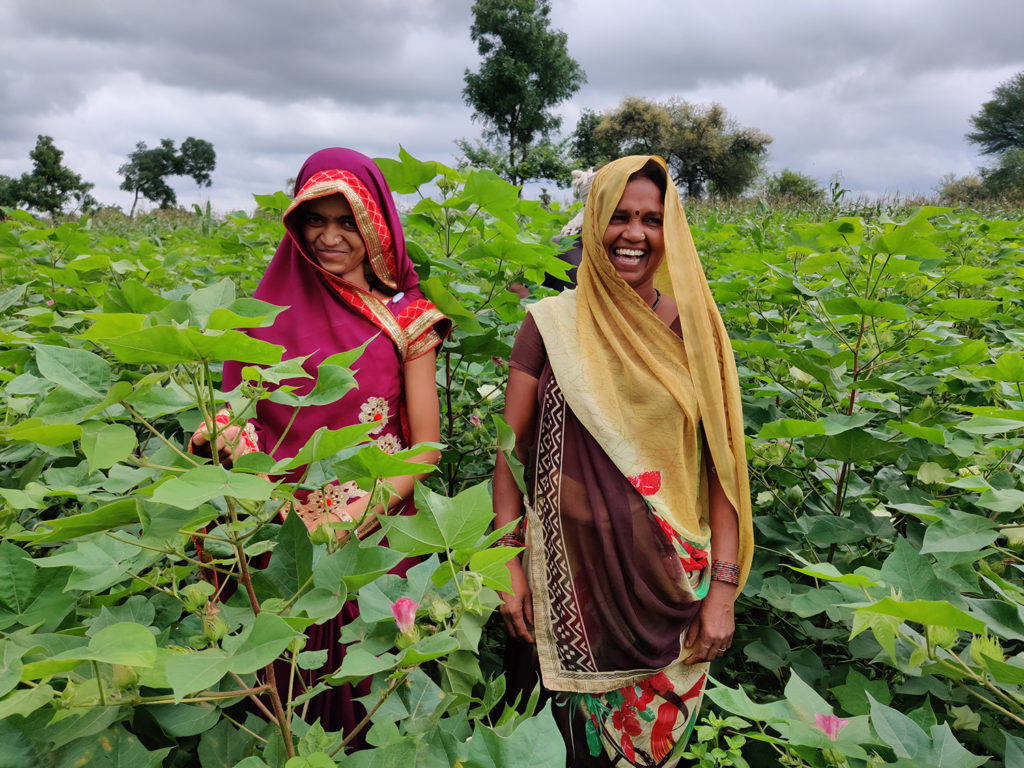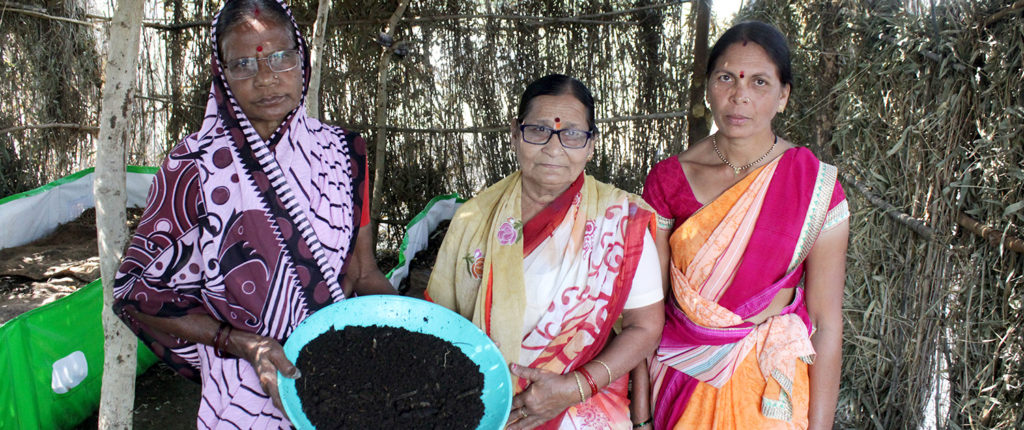A moral challenge for adaptation in the era of the Sustainable Development Goals (SDGs) for both policy and practice is “leaving no one behind”. Rural women are at risk from a double whammy of climate change and pre-existing discriminatory social norms. We need to address equitable adaptation – ensuring everyone has access to resources required for building resilience, irrespective of their gender and ethinicity. Only then can we achieve our vision of a shared future.
The overwhelming narrative emerging from climate change induced vulnerabilities across the globe is one of crisis. Countries are witnessing increasingly hostile and unpredictable weather patterns. These stresses have caused biophysical systems to cross their thresholds, destabilized livelihoods of millions of people, and threaten far reaching consequences for well-being and food security for decades to come1. Climate change has thus evolved from being an environmental issue to also a social one. While we are still learning about the human consequences of a rapidly changing environment, experts unanimously agree that developing countries will be disproportionately affected2. These regions are home to socially diverse and resource constrained rural communities dependent on climate sensitive livelihoods.
Within these countries, research on adaptation at the community level paints a more nuanced picture. At the sub-regional levels, experiences with vulnerability are diverse and shaped by agro-ecological contexts, socio-cultural factors, and gender. Rural women are at risk from a double whammy of climate change and rigid gender norms.
Rural Women – Lone First Responders of the Climate Crisis
A dialogue on climate change is incomplete without the full participation of women. Is it because their responsibilities are intrinsically linked to sensitive natural resources? Yes, but more so because they experience vulnerability differently from men.
With the out-migration of men to urbanised centers to combat losses in rural livelihoods, women stay behind and are increasingly engaging with production, trade and rural enterprise. They are assuming roles and responsibilities with little to no bargaining power in spaces they were historically neglected. All this is unfolding in the background of loss of support, increased workload, and social norms that restrict access to resources that are crucial for building resilience. This is an all too familiar story across developing and emerging countries.
When rural well-being is threatened, the disproportionate burden to cope falls on women. The concern here is that entrenched unequal gender relations will be a key depressor in the ability of women to make meaningful choices and decisions to adapt. Understanding gender differentiated perceptions, impacts, vulnerabilities, capabilities, and capacities need to be prioritized. If overlooked, the progress achieved under the SDGs will be unequally distributed and already divested populations will only become worse off. The sheer scale of the latter occurring will be devastating with women accounting for a larger share of the poor across the world and with one in three women employed in a highly climate-sensitive sector such as agriculture3.

Global Climate Action Needs Women
As first responders on the community frontlines desperately trying to secure the well-being of their families on a daily basis, women bring with them rich knowledge and experience for climate action.
One such change maker spearheading organic farming to help farmers become resilient in Kalamb block of Yavatmal district in the state of Maharashtra is Sushila Shankar Rao Chatale. She is a cotton and soya bean farmer with 1.2 hectares of land and 17 years of farming experience.
When asked about the manifestations of climate change in her village of Kotha, she narrates, “Rainfall has become unpredictable! We sow seeds immediately after the first monsoon showers. However, the seeds do not germinate because of dry spells that immediately follow the first bout of rains. We are forced to sow again which increases our expenditure. Rainfall is unevenly distributed, there are either dry spells or high-intensity rainfall. In the past few years, we have observed rainfall during the harvesting season! During this period, the seeds in the in soya bean pod begin to germinate affecting production, and in cotton crop, the moisture content increases and affects the quality”.
Commenting on the hardships to smallholder producers she adds, “Farmers are investing more in chemical inputs to deal with frequent pest attacks and crop loss. But this has done nothing except deteriorate soil quality and increase investments in agriculture”.

Sushila learnt how to make her own bio-fertilisers and bio-pesticidies using local flora and leaves from the capacity building support provided under the Women + Water Alliance project supported by USAID and Gap Inc. She has now switched to organic farming and produces large quantities of organic inputs to distribute to other farmers to encourage them to take the plunge into sustainable agriculture.
Like Sushila, rural women across the world, untethered from restrictive cultural and social norms, are leading climate action by becoming early adopters of new agricultural techniques and proponents of sustainable agriculture among others.
Recognizing that gender and social identities alongside agro-ecological contexts shape vulnerability, the Institute for Sustainable Communities as part of the USAID-Gap Inc. supported Women+Water Alliance Project aims to unpack the climate-cotton-water nexus and articulate the vulnerabilities as experienced by men, women and different farmer and social groups.
Rural women offer hope to enable and accelerate progress towards an equitable and just future, despite disproportionately bearing the risk and burden of adaption. Climate action at multiple scales needs women!
Divya Nazareth, Program Officer, Institute for Sustainable Communities.
This post does not represent the views or positions of the U.S. Agency for International Development, the U.S. Government, or Gap Inc.
1Hoegh-Guldberg, O., D. Jacob, M. Taylor, M. Bindi, S. Brown, I. Camilloni, A. Diedhiou, R. Djalante, K.L. Ebi, F. Engelbrecht, J.Guiot, Y. Hijioka, S. Mehrotra, A. Payne, S.I. Seneviratne, A. Thomas, R. Warren, and G. Zhou, 2018: Impacts of 1.5ºC Global Warming on Natural and Human Systems. In: Global Warming of 1.5°C. An IPCC Special Report on the impacts of global warming of 1.5°C above pre-industrial levels and related global greenhouse gas emission pathways, in the context of strengthening the global response to the threat of climate change, sustainable development, and efforts to eradicate poverty [Masson-Delmotte, V., P. Zhai, H.-O. Pörtner, D. Roberts, J. Skea, P.R. Shukla, A. Pirani, W. Moufouma-Okia, C. Péan, R. Pidcock, S. Connors, J.B.R. Matthews, Y. Chen, X. Zhou, M.I.Gomis, E. Lonnoy, T.Maycock, M.Tignor, and T. Waterfield (eds.)]. In Press.
2Unprecedented Impacts of Climate Change Disproportionately Burdening Developing Countries, Delegate Stresses, as Second Committee Concludes General Debate, United Nations, October 2019, https://www.un.org/press/en/2019/gaef3516.doc.htm
3Rural women a ‘powerful force’ for global climate action: UN Secretary-General, UN News, October 2019, https://news.un.org/en/story/2019/10/1049231
